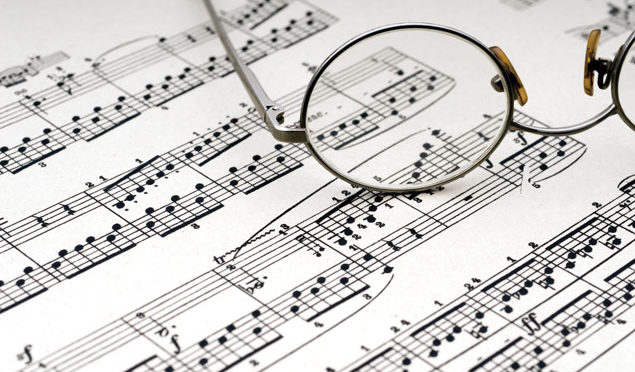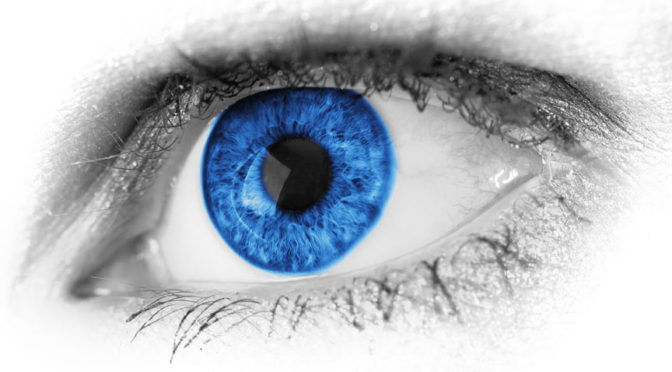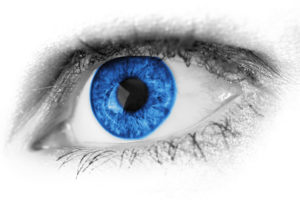As musicians, most of us rely on our eyes to read music, monitor audience response, and collaborate with colleagues. Vision is something that many of us take for granted until we begin to lose it. By the year 2020 it is estimated that 3.36 million people will have primary open-angle glaucoma (POAG) and about half will be unaware they suffer from this disease, even though early detection and treatment can prevent or delay vision loss. And, while diabetic retinopathy is a leading cause of blindness, many patients with diabetes do not receive evaluation and treatment in time to minimize vision loss.
Most people who require corrective vision visit their local optometrist annually or semi-annually to update their prescription. This type of examination, focused on the management of vision changes, is called a refractive examination. However, it is also important to periodically schedule an eye exam with a medical doctor specializing in eye care (or ophthalmologist) for a diagnostic eye examination. Only an ophthalmologist is qualified to provide the full range of eye care, from treating eye diseases with medicine to performing eye surgery to prescribing corrective lenses.
The American Academy of Ophthalmology recommends that healthy individuals with no signs or risk factors for eye disease get a baseline eye examination at age 40. This is a time when early signs of disease or changes in vision are likely to occur. People with certain risk factors—diabetes, high blood pressure, family history of eye disease, or those taking certain medications—should schedule earlier and more frequent exams.
The examination will likely include:
• Medical history
• Visual acuity
• Evaluation of your pupils’ response to light
• Evaluation of peripheral vision
• Ocular motility test to evaluate movement of the eyes
• Tonometry, or eye pressure test, for
glaucoma
• Use of a slit lamp to examine the front part of the eyes for cataracts, scars, or scratches to the cornea
• Examination of your retina and optic nerve for signs of disease
This initial examination will likely take about 45 to 90 minutes. The doctor may suggest additional testing using specialized imaging techniques. Based on the initial screening, the ophthalmologist will advise you as to how soon you should schedule your next examination.
In addition to a baseline exam at age 40, the American Academy of Ophthalmology suggests that you should visit an ophthalmologist immediately if you experience decreased vision, changes in vision, or physical changes to the eye.
10 Tips for Healthier Vision
1) Stop smoking. Smoking raises the risk of macular degeneration and speeds up damage when you do have the disease.
2) Wear sunglasses. Ultraviolet radiation from the sun increases your chances of developing macular degeneration. Look for sunglasses labeled UV 400 that also cover the sides of your eyes.
3) Exercise. As your heart strengthens it pumps more oxygen-rich blood to your eyes. Also, obesity puts you at higher risk of macular degeneration.
4) Monitor your blood pressure. High blood pressure can damage blood vessels and your heart’s ability to carry a steady stream of oxygen-rich blood to your eyes.
5) Use better lighting. Avoid fluorescent bulbs and other light sources that mimic the damaging rays of the sun. Incandescent and LED lights are safer. Use drapes and shades to cut glare.
6) Eat healthy. Leafy greens contain antioxidants and other nutrients that support eye health. Fish like salmon, trout, sardines, tuna, and mackerel are rich in omega-3s, which boosts eye health. Saturated and trans fats can increase macular degeneration damage.
7) Take supplements. Some vitamin and mineral formulas (AREDS and AREDS2) may slow macular degeneration. Consult your physician to find out if these are right for you.
8) Monitor your cholesterol. LDL “bad” cholesterol can build up in your eyes and form deposits called drusen that affect your vision.
9) Visit an eye doctor. Vision loss from macular degeneration does not
occur right away. Stay on top of it with regular visits, if you notice vision changes.
10) Look into vision rehabilitation. A team of specialists can work with you to make the most of the sight you have.




